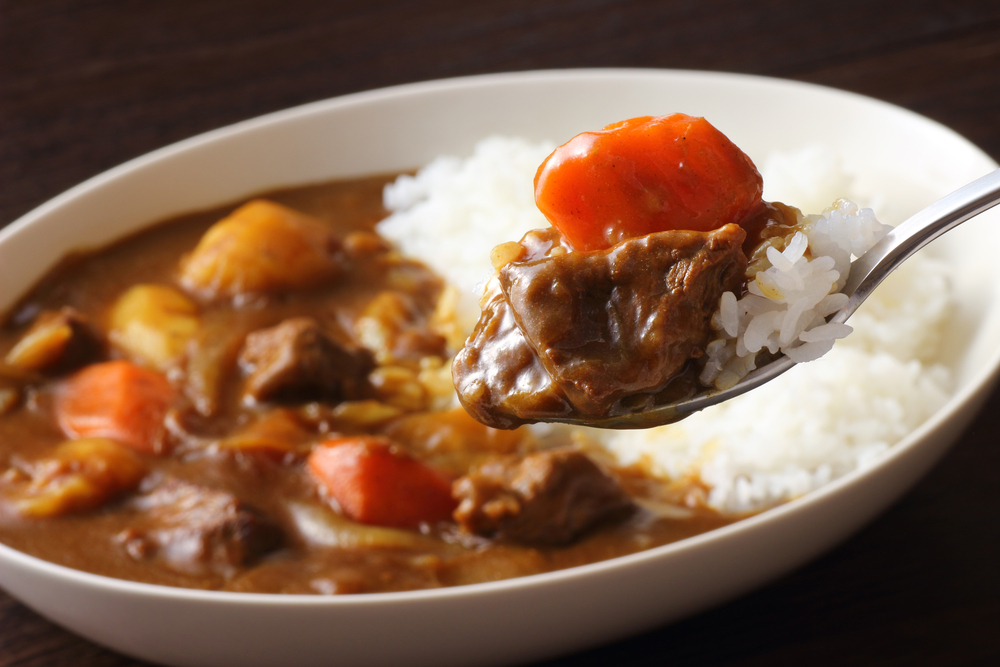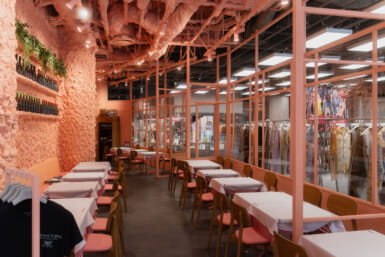Japanese curry’s global popularity continues to spread. The curry chain Ichibanya already runs curry restaurants in a dozen countries such as Singapore, the United States, Thailand, Vietnam and the United Kingdom. Now the restaurant chain plans to bring Japanese curry to India.
According to The Japan Times, Ichibanya Co., Ltd. wants to open its first outlet in New Delhi sometime in 2020. It comes as no surprise that in Japan the dish is already massively popular. The average Japanese person eats curry approximately 73 times a year according to the All Japan Curry Manufacturer’s Association. A Guru Navi survey reveals that Japanese adults between the age of 40-69 said that kare-raisu (curry rice) was their favorite dish, and the 6-12 year olds agreed.
Coco Ichibanya restaurant chain plans to sell Japanese curry … to India https://t.co/6Aje0XgeyP
— The Japan Times (@japantimes) September 24, 2019
The Origins of Curry
So where does this dish originate? India? What if I told you there is no such thing as “curry” in India and furthermore there is no such thing as Indian food period. The sub-continent is a vast reservoir of cultures, languages, traditions and experiences. So while there may be Punjabi food, Tamil food and Bengali food, there is no pan-Indian cuisine. As visitors to India cannot easily absorb the abundant diversity they resort to simplifying what they encounter. This is understandable but not always desirable. Simplifying such a diverse part of the world is an impossible task.
Curry, a product of this attempt to simplify, is perhaps the most famous “Indian” food – except in India where it is not used. Outside India, curry is created using a pungent spice blend called curry powder. This spice mix usually has a turmeric or a coriander base, depending on the brand or the region of manufacture. Indians also use spice blends such as garam masala or molaha podi – South Indian gunpowder spice mix – but the concept of “curry powder” simply does not exist in India.
The concept of “curry powder” simply does not exist in India.
Just Like Mom’s
Madhur Jaffrey, a famous Indian cooking show host, told the Chicago Tribune that curry is degrading to India. Jaffrey does have a point. When my mother cooks typical Punjabi meals, she uses garam masala, which is synonymous with Punjabi cuisine. Or she adds fresh individual spices like fenugreek seeds, cinnamon sticks, cloves, cardamoms and such. That is a pattern seen in other parts of the country as well.
The relationship between curry and India is complicated. The dominant cuisines of India eaten in the Western world are from the north and west of the country. Dishes like tandoori chicken, samosas, chicken tikka, palaak paneer and naan have North Indian origins.
https://twitter.com/kobunheat/status/1218202830122520576
More Popular Than Sushi?
Yet when Westerners first came to India, they did not colonize the north, it was the South Indians that they encountered. Curry’s etymology can be traced to kaɽi, a Tamil word that originally meant “meat.” Vasu Renganathan, lecturer of Tamil language and literature at the University of Pennsylvania’s Department of South Asia Studies says, “No doubt that the English word ‘curry’ is to be understood to have originated from the Tamil word kaɽi. The retroflex ɽ is typical of Dravidian and hence we also have a phonological evidence to prove it is from Tamil.”
According to Renganathan even among the Tamils, the understanding of the word kaɽi changes from region to region and dialect to dialect. So what does a South Indian living in Tokyo make of Japanese curry? Ramesh Krishnan, a student at Hitotsubashi University, comes from a Tamil background. He says at home no one uses the term “curry.”
After ramen, curry is the second most-popular national dish, way ahead of miso soup and sushi.”
What does Krishnan like about Japanese curry? “I like that it is accessible everywhere. I read that after ramen, curry is the second most-popular national dish, way ahead of miso soup and sushi.”
Takaaki Kagawa, a language expert who spent five years in the North Indian city of Chandigarh, says that he did not find anything in India called “curry powder.” The only exceptions were specific grocery shops selling imported items. He said that when he was staying in India no one ate curry or used curry powder. He reflected, “Actually the local people use the word ‘curry’, but only when talking to non-Indians.
“The word ‘curry’ cannot define Indian food because there are too many different cultures in India and the food also varies greatly from region to region,” notes Kagawa.
Japanese curry originated from curry powder that 19th-century British sailors took with them to Japan. The Meiji government needed to feed its soldiers and sailors healthily and in bulk. Anglo-Indian curry soon became a standard meal in the Japanese navy. https://t.co/hqsuJl1PZt
— hardmaru (@hardmaru) November 3, 2018
Blame the Brits
Imagine my surprise when I first visited Japan in 2008 and was introduced to the fragrant brown sauce famed for its Indian origins called “Japanese curry.” Apparently, this “Indian” dish was passed on to the unsuspecting Japanese by the British. In fact, so deep is the association of this dish with India, that when my Japanese partner’s mother first heard that I was from India, she offered to cook curry every day of my visit so I would be spared any culinary discomfort. Somehow my partner managed to extricate me from a monotonous fate akin to death by culinary kindness.
Japanese curry is unlike any food we have in India. As an Indian I find the dish extremely potent. It lacks the fresh aromatic profiles of onion, ginger and garlic that form the base of many Indian sauces. Also missing is the delicate astringency that is derived from the tomatoes used in most Indian dishes. “Spicy,” as it is known in Japan, has no equivalent in India. The dissimilarity has been noticed fellow Indians as well “The heat and spice are completely different from Indian food,” observes Krishnan. “I wish they’d tone down the focus on ‘spiciness.’”
There was something lacking in not having restaurants in the birthplace of curry.
‘The Birthplace of Curry’
Japanese curry should be celebrated on its own merits and sold as a Japanese food. In the near future, Indians will be introduced to this exotic dish from Japan as Ichibanya opens its first restaurant in New Delhi. Ichibanya’s chairman Toshiya Hamajima has been heard lamenting that “There was something lacking in not having restaurants in the birthplace of curry.”
Do we laugh, cry or with good humor accept that some myths die hard? India! Brace yourself for your first date with the world-famous dish called curry.
Feature photo: taa22 / Shutterstock.com









